Highlights
Artists propose works inspired by quantum residency
Two artists-in-residence hosted at CQT have conceptualised artworks that draw from their exposure to cutting-edge quantum science.
Wong Zi Hao and Grace Tan were selected for residencies organised as part of the NUS Public Art Initiative in collaboration with NUS Museum. Each artist spent a few months in 2022 meeting with researchers and visiting CQT labs to explore a field wholly new to them.
Both artists have concluded their participation in the CQT Artist-in-Residence (AiR@CQT) programme by presenting proposals for public art for the Centre.
Evolving ideas
As the artists learned about quantum technologies during their residencies, they took ideas into their artistic practice.
For Zi Hao, who was simultaneously completing a PhD interrelating creative methods of drawing fragile landscapes as practices of care towards the environment, that meant producing a body of drawings focused on the concept of fragility.
He was particularly inspired by the way CQT researchers use light to visualise and manipulate the fragile quantum states of atoms. He materialised fragility in a conceptual coral-like coastal landscape by punching holes into overlapping paper layers. Light shone through the layers and cyanotype prints made from them revealed the complexity of an ephemeral landscape. He called this work Seeing+Sensing Fragility (2022).
Grace, who is well known for her sculptural works, was interested by quantum technologies that use light and particles meeting barriers and interfaces – such as electrons tunnelling, or light passing through a crystal. She incorporated some of these ideas into pieces in her solo exhibition Dimensions at Esplanade from January to May 2023.

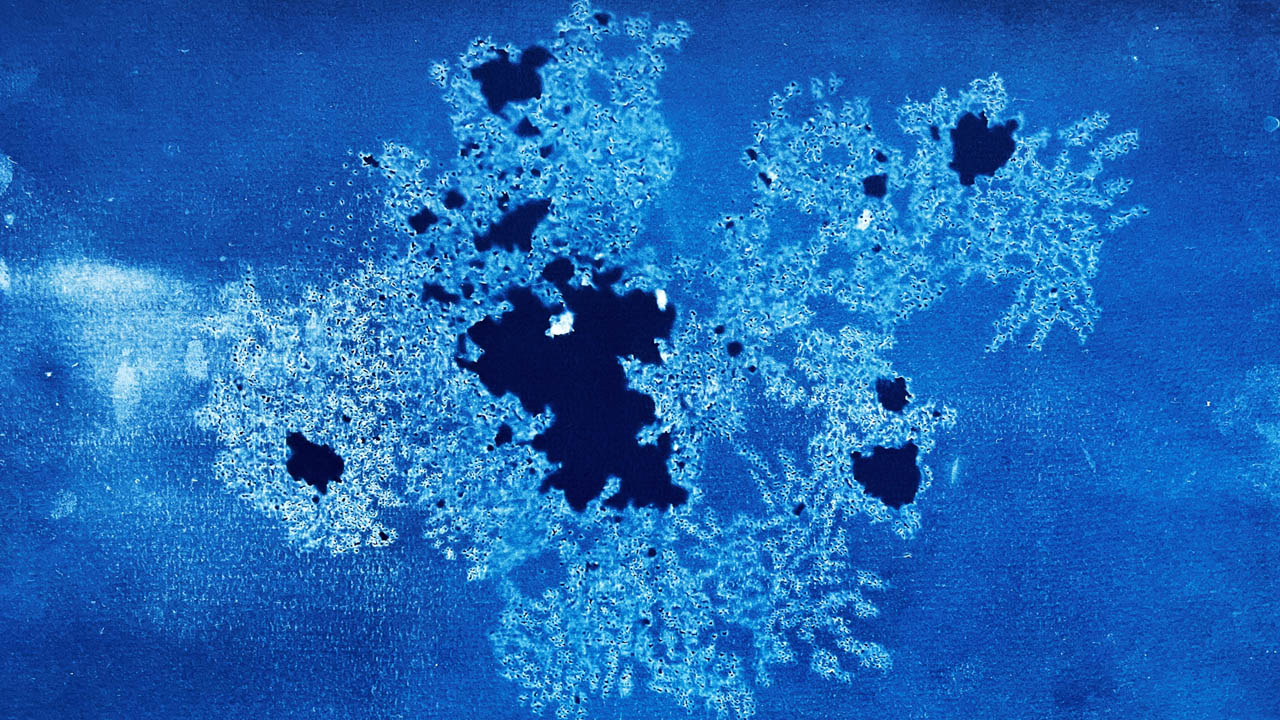 Working drawings for CQT AiR by Zi Hao consisting of punched holes on various paper thicknesses, layered into a three-dimensional stacked composition. These tapestries were both viewed with a light source from behind (top) and fixed in a way that captures the sense of papery thinness and porosity (bottom). This was done with the photographic technique of cyanotype printing, which uses UV from sunlight to fix an image onto paper. Credit: Wong Zi Hao
Working drawings for CQT AiR by Zi Hao consisting of punched holes on various paper thicknesses, layered into a three-dimensional stacked composition. These tapestries were both viewed with a light source from behind (top) and fixed in a way that captures the sense of papery thinness and porosity (bottom). This was done with the photographic technique of cyanotype printing, which uses UV from sunlight to fix an image onto paper. Credit: Wong Zi Hao
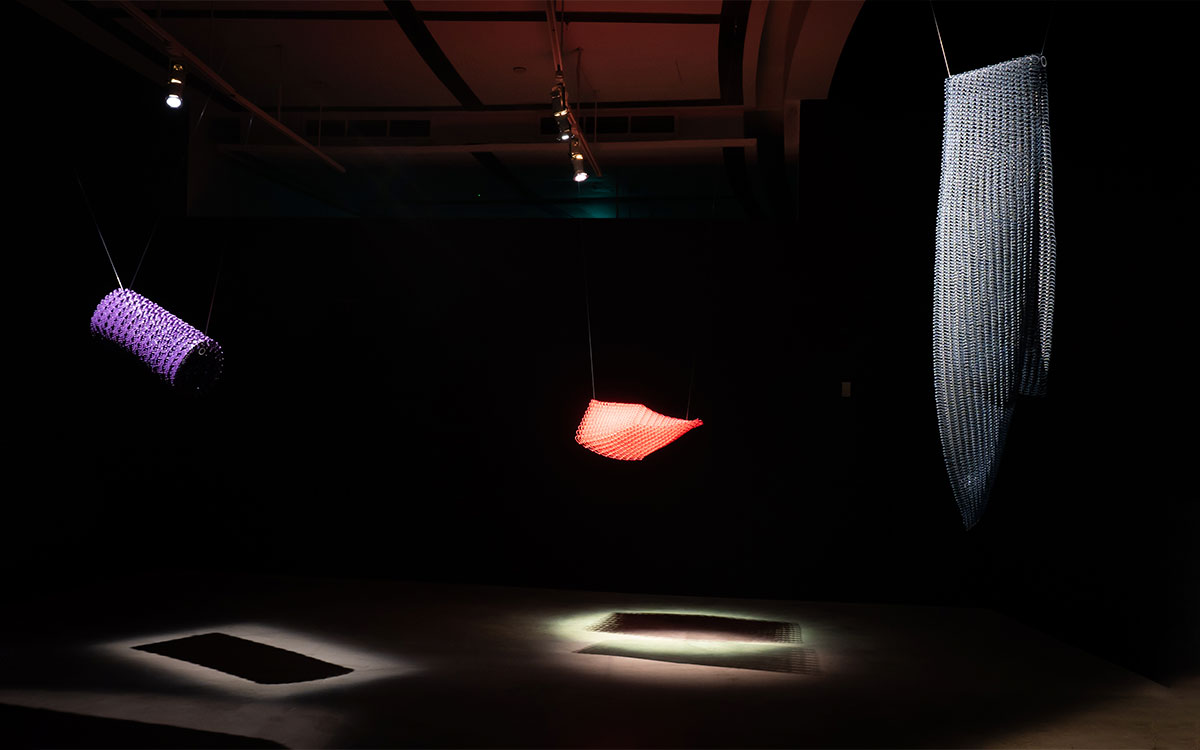 Illuminated, crystal-like materials created by Grace from interlocking cable ties, shown in the exhibition Dimensions held at Esplanade in 2023. Image courtesy of Esplanade – Theatres on the Bay.
Illuminated, crystal-like materials created by Grace from interlocking cable ties, shown in the exhibition Dimensions held at Esplanade in 2023. Image courtesy of Esplanade – Theatres on the Bay.
Final concepts
Building from their exploratory work, both artists put forward final concepts for a public artwork they could create for CQT. They developed these ideas in consultation with public-art curator Karen Lim, then at NUS Museum. The proposals may be considered for commissioning after further discussion and development.
Wong Zi Hao: his proposal titled “Sensing with Light” pushes further his exploration of fragility. It would involve the creation of a many-layered, punched paper tapestry over two metres long, based on patterns derived from the delicate geometries found in the natural world. “Light becomes a central medium to optically and experientially express the concept of fragility, manifesting the punched geometries to be ‘sensed’ and rediscovered anew in unexpected ways,” he explains. The final output would be a film recording the process, with the possibility to put the delicate paper remnants on display too. He anticipates the paper would continue to break down over time.
Grace Tan: her proposal would see sculptural units with an interlocking box-like shape (see artist’s impression) installed to a height of five stories on the Centre’s facade wall. The units would be constructed from dichroic glass, which cast changing multi-coloured shadows on the wall with the movement of the sun – playing on what happens when light passes through a barrier. Dichroic glass is both an established architectural material and used in some CQT experiments as a tool to direct or filter laser light. On the external wall, the shapes, intersection of colours and sizes of the multi-coloured shadows would evolve as design elements at different times of the day.
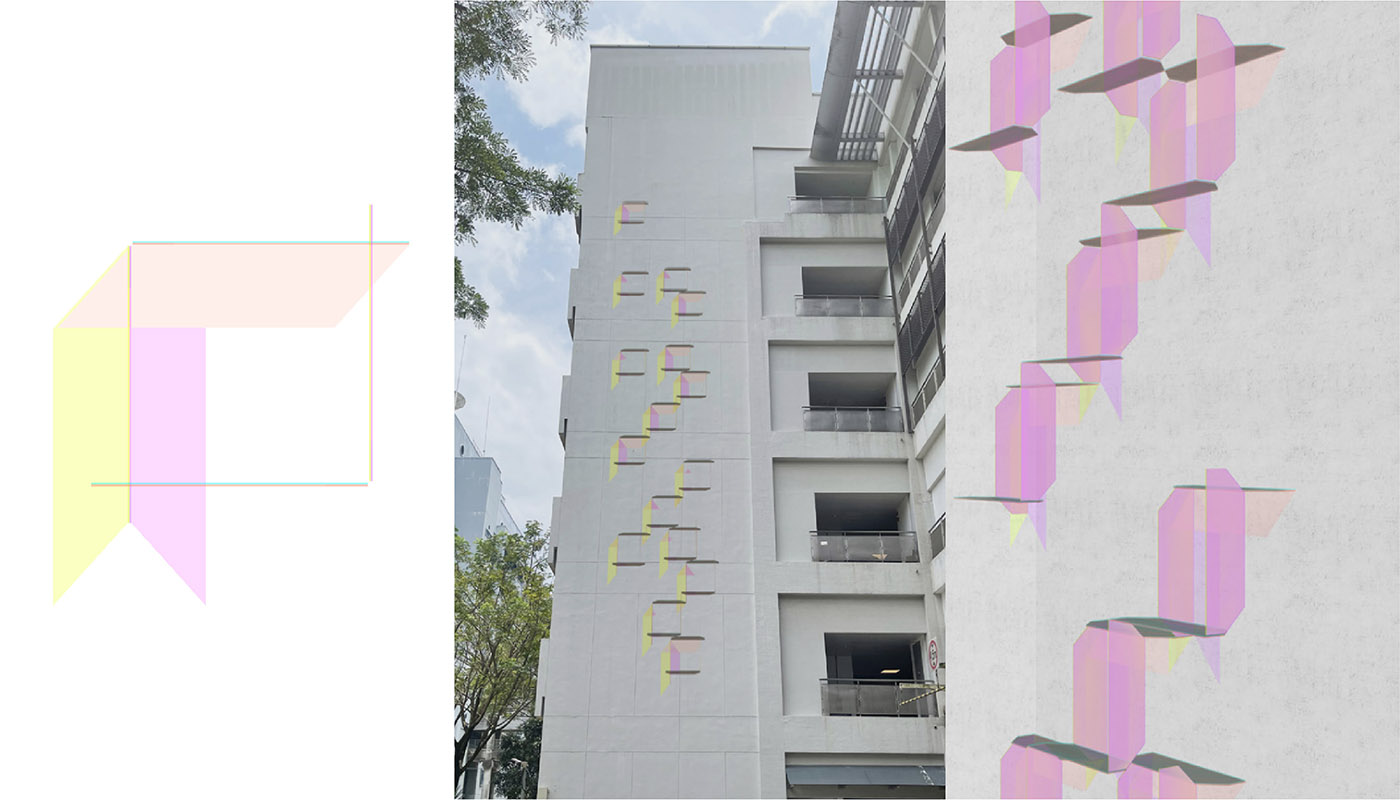 Artist’s illustration of the proposed dichroic glass sculpture on the side elevation of S15 (centre image), where CQT is located. Models (left and right) show the 3D structure and coloured shadows of the box-like units that make up the work. Credit: Grace Tan
Artist’s illustration of the proposed dichroic glass sculpture on the side elevation of S15 (centre image), where CQT is located. Models (left and right) show the 3D structure and coloured shadows of the box-like units that make up the work. Credit: Grace Tan
Learn more
Related Stories
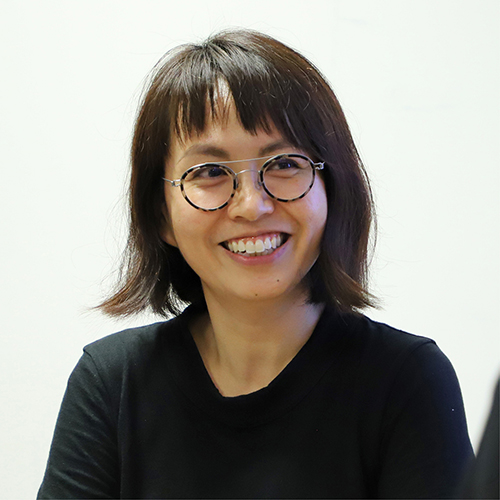 | Grace Tan begins artist residency at CQT September 28 2022 |
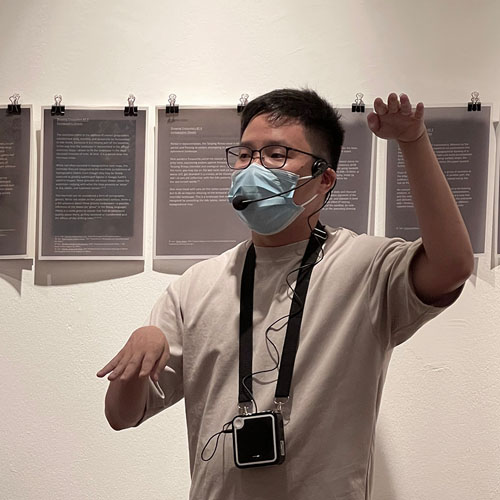 | CQT welcomes Wong Zi Hao as Artist-in-Residence March 07 2022 |






